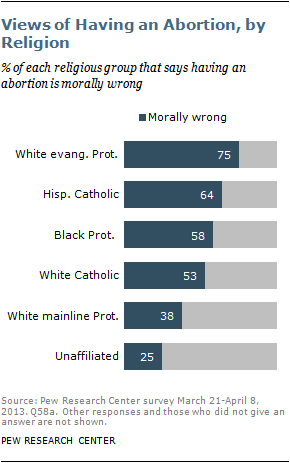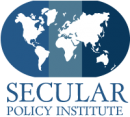The weekly report on research and demographics of the secular movement
by Julie Esris
 This week Kansas governor Sam Brownback signed a bill into law that would severely restrict second trimester abortions. More specifically, the law prohibits the dilation and evacuation (D and E) method of abortion, usually performed after 12-14 weeks of pregnancy. In the D and E method, the fetus is removed from the womb, often in parts. Many doctors say that this as the safest and most convenient technique for second-trimester abortions. The new law, however, is called The Unborn Child Protection from Dismemberment Abortion Act. There are other second-trimester abortion procedures in which this method is not used. The law specifically outlaws dilation and evacuation, not second-trimester abortion. That is, its wording graphically describes the procedure, possibly in order to appeal to peopleÔÇÖs emotions in order to influence them change their minds about abortion, an already very contentious issue in America.
This week Kansas governor Sam Brownback signed a bill into law that would severely restrict second trimester abortions. More specifically, the law prohibits the dilation and evacuation (D and E) method of abortion, usually performed after 12-14 weeks of pregnancy. In the D and E method, the fetus is removed from the womb, often in parts. Many doctors say that this as the safest and most convenient technique for second-trimester abortions. The new law, however, is called The Unborn Child Protection from Dismemberment Abortion Act. There are other second-trimester abortion procedures in which this method is not used. The law specifically outlaws dilation and evacuation, not second-trimester abortion. That is, its wording graphically describes the procedure, possibly in order to appeal to peopleÔÇÖs emotions in order to influence them change their minds about abortion, an already very contentious issue in America.
According to a 2013 Pew poll that surveyed 4,006 adults, abortion is as divisive an issue as ever. 49% of adults surveyed believe that abortion is morally wrong. As one would expect, religion strongly factors in peopleÔÇÖs stances on abortion. White evangelical Protestants are the most opposed to abortion (75%), followed by Hispanic Catholics (64%). Black Protestants oppose abortion at 58%, white Catholics at 53%, and white mainline Protestants at 38%. Not surprisingly, those unaffiliated with any religion are the least likely to be opposed to abortion (25%). Followers of non-Christian religions were not surveyed in this poll.

Stance on Abortion by Religious Affiliation
Although religious affiliation is a good predictor of oneÔÇÖs stance on abortion, according to the same poll, religious service attendance is an even better one. 70% of people surveyed who attend religious services once a week are opposed to abortion vs. 32% who rarely or never attend. This pattern of church attendance predicting opposition to abortion remains consistent for most religious groups surveyed: 50% vs. 33% of white mainline Protestants and 74% vs. 40% of white Catholics. However, attendance of services by Hispanic Catholics are an exception to this rule.
While religion clearly factors strongly into oneÔÇÖs stance on abortion, the fact that religious attendance factors even more strongly is interesting and is worth considering. Does it mean that religious attendance is a reflection on a personÔÇÖs religiosity, or is there another factor at work? Perhaps group pressure is involved. That is, when one is part of a community, religious or otherwise, that person could be more likely to adopt the beliefs of others in the community. Or they could be more likely to at least profess to believe them. Evolutionary psychologist Steven Pinker has discussed his phenomenon, in which people in groups are afraid to dissent from what they think others in the group believe. The naming of The Unborn Child Protection from Dismemberment Abortion Act could be part of this dynamic. It is likely an appeal to emotion, and it is worth considering whether this would have an even more profound effect on people in groups, such as those who regularly go to church.
In any case, we as secularists must examine the issue of abortionÔÇöor any other issueÔÇö from as logical a standpoint as possible. Although secularists are starting to form groups, it is important to emphasize that oneÔÇÖs position on an issue should come from evaluating statistics and looking at evidence with as little group influence as possible. Only a small minority of secularists is opposed to abortion, and one would hope that those who are not opposed to it have arrived at that stance on their own rather than from group pressure or clever word choices that appeal to emotions. We call ourselves freethinkers, but we are also human and are as susceptible to peer pressure as anybody else.
